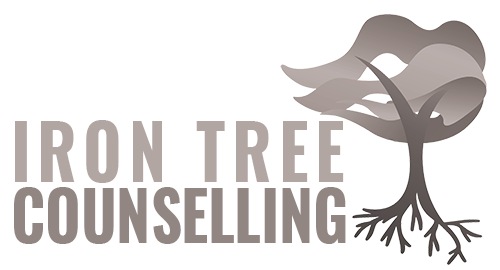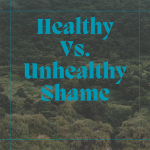How to Recognize Toxic Shame
Getting Started
In the previous blog post, I described the differences between healthy and toxic/unhealthy shame. In this post I will use the terms toxic and unhealthy interchangeably in reference to this form of shame. I will describe how to more accurately recognize toxic shame and healthy shame so that you can learn to overcome shame.
The first step to any sort of emotional awareness and developing increased emotional intelligence is to become aware of your emotions and how they play a role in your life. Thus, I hope that at most this article can provide some topics for further reflection and exploration.
Recognize Toxic Shame
Unhealthy Shame can manifest in various ways, and there are several cues that can indicate its presence. One particular way of discerning unhealthy shame from healthy shame is that when feeling “stuck” in a feeling of shame or any of the criteria below, this is more likely to indicate that it is unhealthy. When shame, or any other emotion, functions in an adaptive manner, it feels more fluid, transient, and able to be transformed. Below are some examples of cognitive, behavioural, emotional, and physiological criteria that can be used to recognize toxic shame:
Cognitive Cues
- Negative Self-Talk: A person with unhealthy shame may engage in self-criticism and harsh judgment towards themselves, often using negative language and focusing on their perceived flaws or weaknesses.
- Catastrophizing: This refers to an exaggerated and irrational belief that something is much worse than it actually is. A person with unhealthy shame may engage in catastrophizing by imagining the worst possible outcomes or consequences of their actions or decisions.
- Black-and-White Thinking: Also known as “all-or-nothing” thinking, this refers to the tendency to see things in absolute terms, with no room for shades of grey. A person with unhealthy shame may engage in black-and-white thinking by seeing themselves or others as either completely good or completely bad, without acknowledging any nuance or complexity.
Behavioural Cues
- Avoidance: A person with unhealthy shame may avoid situations or activities that they perceive as potentially embarrassing or shameful, even if they would be beneficial or enjoyable.
- Defensiveness: When confronted with criticism or feedback, a person with unhealthy shame may become defensive and deny or minimize their mistakes or shortcomings.
- Perfectionism: A person with unhealthy shame may set impossibly high standards for themselves and feel intense pressure to meet them, often at the expense of their mental and physical well-being.
Emotional Cues
- Intense Feelings of Worthlessness or Inadequacy: A person with unhealthy shame may feel a pervasive sense of shame and self-loathing, even in situations where they have not done anything wrong.
- Anxiety: Unhealthy shame can lead to feelings of intense anxiety or fear of being exposed or judged by others.
- Depression: Unhealthy shame can also lead to feelings of hopelessness and despair, which can contribute to depression.
Physiological Cues
- Blushing: Unhealthy shame can cause a person to blush, which is a physiological response to feelings of embarrassment or shame.
- Rapid Heartbeat: A person with unhealthy shame may experience a rapid heartbeat, which is a common physiological response to stress or anxiety.
- Muscle Tension: Unhealthy shame can cause muscle tension, which can manifest as stiffness or discomfort in different parts of the body. It can also cause a flaccid feeling in the muscles or a sense of being heavy, paralyzed, and immobile.
To overcome shame, especially unhealthy shame, it is incumbent of us to first identify and address it – by recognizing it by its cues. By paying attention to cognitive, behavioural, emotional, and physiological indicators, you can develop strategies to regulate and manage your shame in a healthy and constructive way.
Therapy, self-compassion, and mindfulness practices are all effective approaches for dealing with unhealthy shame and promoting emotional well-being.
Recognize Healthy Shame
Healthy shame is an adaptive emotion that can help us learn from our mistakes, grow, and develop healthy relationships with ourselves and others. Unlike unhealthy shame, healthy shame does not involve feelings of worthlessness, self-loathing, or intense anxiety. Instead, healthy shame is a more balanced and constructive emotion that can facilitate personal growth and self-awareness.
When in a feeling of healthy shame (as well as unhealthy shame) the posture of the person feeling this way tends to be of bent over forward, hunched shoulders, eyes facing down to the floor, with a physical sensation of a sunken and empty chest (a feeling of a void in the chest).
If it is healthy shame, then the act of mindfully attending to this experience can lead to some of the below experiences. If unhealthy, then it can feel as though you are paralyzed and stuck in this state. Below are some examples of cognitive, behavioural, emotional, and physiological criteria that can be used to recognize healthy shame:
Cognitive Cues
- Realistic Self-Appraisal: A person experiencing healthy shame is more likely to engage in realistic self-appraisal, acknowledging their mistakes or shortcomings without overly harsh self-criticism.
- Acceptance of Responsibility: Healthy shame involves accepting responsibility for one’s actions and recognizing the impact they have on oneself and others.
- Self-Forgiveness: Healthy shame involves acknowledging one’s mistakes and shortcomings, but also showing self-compassion and forgiveness.
Behavioural Cues
- Willingness to Make Amends: A person experiencing healthy shame is more likely to take actions to make amends for their mistakes or repair any damage caused by their behaviour.
- Openness to Feedback: Healthy shame involves being open to feedback from others and using it as an opportunity for growth and self-improvement.
- Seeking Help: Healthy shame involves recognizing when one needs help or support and seeking it out in a constructive way.
Emotional Cues
- Humility: Healthy shame involves recognizing one’s limitations and imperfections without feeling inferior or inadequate.
- Empathy: Healthy shame involves being able to empathize with others and recognize the impact of one’s actions on others.
- Hope: Healthy shame involves recognizing that one can learn and grow from their mistakes and that there is a possibility for positive change.
Physiological Cues
- Calmness: Healthy shame does not involve intense feelings of anxiety or distress, so a person experiencing healthy shame is more likely to be calm and centered.
- Open Body Language: Healthy shame involves a willingness to be vulnerable and open, so a person experiencing healthy shame may exhibit open body language, such as uncrossed arms or relaxed shoulders. You may still feel a heaviness in the chest or belly and perhaps a weakness in your limbs, but will feel in control of your body and be able to tolerate this experience.
- Relaxation: Healthy shame does not involve muscle tension or as much discomfort as unhealthy shame, so a person experiencing healthy shame is more likely to be relaxed and able to become comfortable.
Start to Overcome Shame
Healthy shame is an important emotion that can facilitate personal growth, self-awareness, and positive relationships with ourselves and others. By recognizing the cognitive, behavioural, emotional, and physiological cues of healthy shame, we can develop a more balanced and constructive relationship with this emotion and use it to promote our well-being and growth.
Again, the above information is meant to provide some insights and jumping off points into your own exploration and discovery of the role of shame (healthy/unhealthy) in your life and to help you overcome shame when it begins to hold you back. All emotions, like many experiences, can be helpful (healthy) on one spectrum and unhelpful (unhealthy) on the other side of the spectrum.
Thus, a lot of the principles discussed here can be applied to other emotions as well. If it is healthy/adaptive/helpful then most likely it is fluid and able to be transformative and informative. If it is unhealthy/unhelpful/maladaptive then it will most likely feel more chronic, immovable, and resistant to change.
Stay tuned for the next blog posts about topics of emotional intelligence to learn more about how to understand, recognize, and transform your emotions so that you can use them to improve your life and live more according to your values.
Note:
**Now, it is important to understand that all of the above information is general in nature to the experience of shame. If any of the above cues or topics resonate with you, it is important to further reflect to see where in your life this aspect fits in your reality. Talking with a supportive other, like a trusted partner or therapist can help to understand the specifics of how these types of shame may play a role in your life.
References:
- Tangney, J. P., & Dearing, R. L. (2002). Shame and Guilt. Guilford Press.
- Brown, B. (2007). I Thought It Was Just Me (But It Isn’t): Making the Journey from “What Will People Think?” to “I Am Enough”. Gotham Books.
- Gilbert, P. (2010). The Compassionate Mind. Robinson.
- Tracy, J. L., & Robins, R. W. (2004). Putting the self into self-conscious emotions: A theoretical model. Psychological Inquiry, 15(2), 103-125.
- Lewis, H. B. (1971). Shame and guilt in neurosis. International Universities Press.
- Germer, C. K., Siegel, R. D., & Fulton, P. R. (Eds.). (2013). Mindfulness and psychotherapy. Guilford Press.
- Neff, K. D. (2011). Self-compassion: The proven power of being kind to yourself. William Morrow.
- Nathanson, D. L. (1992). Shame and pride: affect, sex, and the birth of the self. WW Norton & Company.





